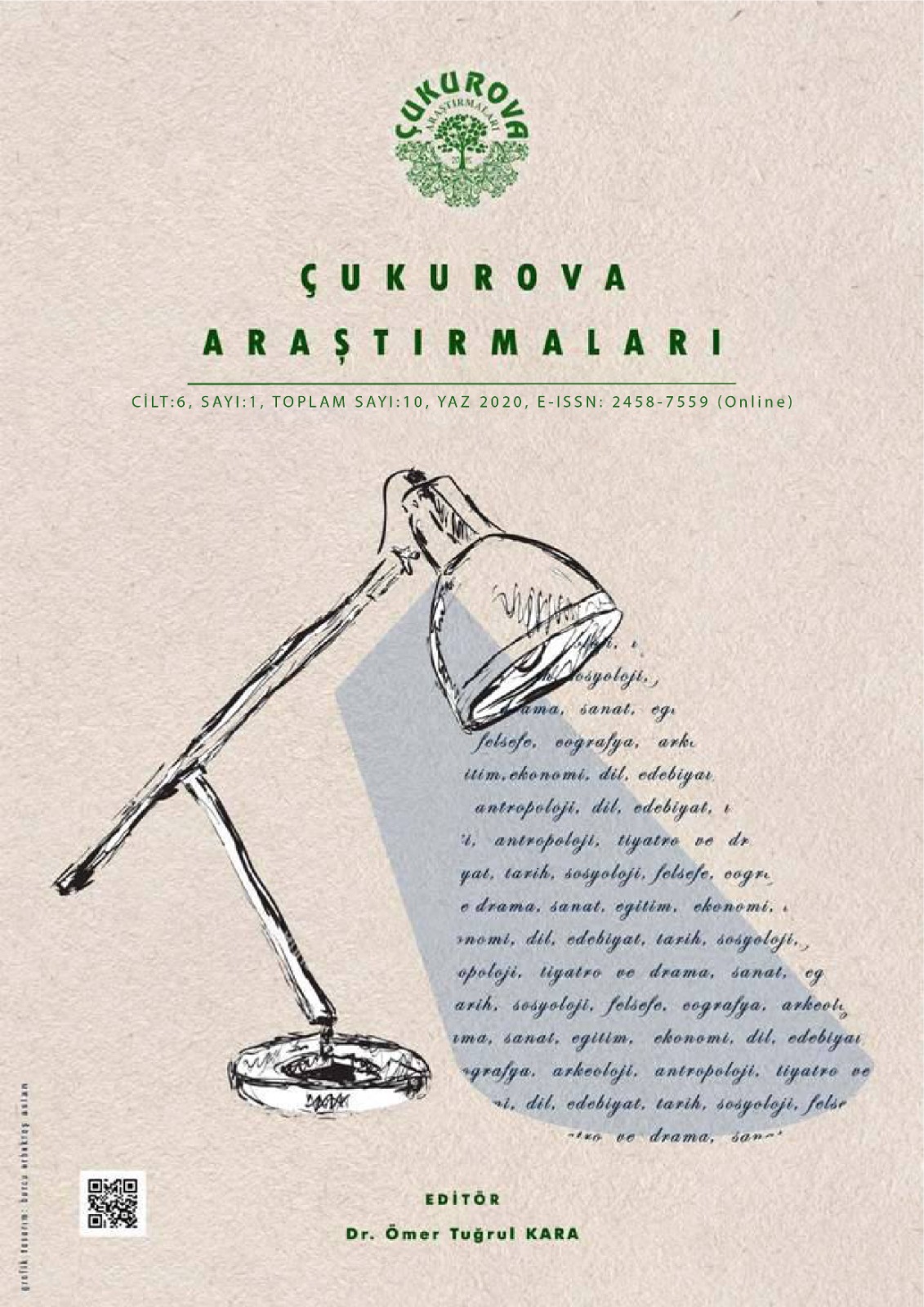Author :
Abstract
İç Anadolu Bölgesi, tarihi dokusunu önemli ölçüde koruyan şehirlerimizden oluşur. Niğde şehri, Anadolu Selçuklu ile başlayan, daha sonra Beylikler ve Osmanlı ile devam eden dönemlerde oluşan ve günümüze ulaşan, zengin tarihi ve kültürel mirası bünyesinde bulundurur. Şehir, tarihi ve kültürel mirasın önemli bir parçası sayılan türbe ve çeşme mimarisi açısından da oldukça zengin sayılır. Bu çalışmamızda, yeni tespit ettiğimiz Niğde Kalender Baba Türbesi (1341) ve Bor/ Kürkçü Köyü - Derviş Baba Türbesi (1799) ile Bor/ Kürkçü Köyü - Tekke Çeşmesi (1808) mimari ve süslemeleri açısından incelenerek, bilim dünyasına tanıtılacaktır. Niğde Kalender Baba Türbesi, tek katlı, eyvan tipi türbeler grubuna girer. Yapı, yöreye mahsus sivri takviye kemerleriyle desteklenen sivri beşik tonozla örtülmüştür. Eratna Beyliği döneminde inşâ edildiği anlaşılan türbenin içerisinde, muhtemelen Kalenderi şeyhi veya dervişi olduğunu düşündüğümüz Muhammed Bayezit’e ait 741 H./ 1341 M. tarihli mermer sanduka bulunmaktadır. Bor/ Kürkçü Köyü-Derviş Baba Türbesi (1799); tek katlı, dikdörtgen plânlı türbeler grubuna girer. Yapının orijinalinde; batı tarafta kubbeli bölüm ile doğu kısımda beşik tonozla örtülü mescit kısmından oluştuğunu düşünmekteyiz. Mescit kısmının beşik tonozu sonradan yıkılınca, onarımlar sırasında düz beton dam ile örtülmüştür. Mekânlar arasındaki bağlantı ise sivri kemerli açıklıkla sağlanmıştır. Bor/ Kürkçü Köyü-Tekke Çeşmesi, fonksiyonunu sürdürmekte olup “meydan çeşmesi” olarak yapılmıştır. Çeşmenin ön yüzünde iç içe iki sivri kemerli niş bulunur. Çeşme tek lüleli yapılmıştır.
Keywords
Abstract
Central Anatolia Region has the cities in which the effects of historical buildings can be preserved. Niğde is considered to be quite rich in historical and cultural heritage derived from Anatolian Seljuks, Principalities and Ottomans. The City has also lots of historical and cultural heritage’s samples such as tombs and fountains In this study, the newly identifed Niğde Kalender Baba Tomb (1340) and Bor / Kürkçü Village - Dervish Baba Tomb (1799) and Bor / Kürkçü Village - Tekke Fountain (1808) will be examined and introduced to the world of science. Niğde Kalender Baba Tomb belongs to the group of single storey, iwan type tombs. The structure is covered with a sharp barrel vault supported by local sharp reinforcement belts. Inside the tomb, which can be understood to be built during the Eratna Principality period, there is a marble sarcophagus dated to 741 H. / 1341 M., probably belonging to Muhammed Bayezit, whom we think was the sheikh or dervish of Kalenderi. Bor / Kürkçü Village-Derviş Baba Tomb (1799); belongs to the group of single storey, rectangular tombs. In the original shape of the building; we think that it consists of a domed part on the west side and a small mosque part covered with a barrel vault in the east part. When the cradle vault of the masjid section was subsequently demolished, it was covered with a flat concrete roof during repairs. The connection between the spaces was backed up with a sharp arch opening. Bor/ Kürkçü Village - Tekke Fountain continues its function and was built as a “square fountain”. On the front of the fountain there are two sharp arched niches. The fountain was built with a single bowl.
Keywords
- Acun, H. (1999). Manisa’da Türk Devri yapıları. Ankara: Türk Tarih Kurumu.
- Akşit, A. (2012). Selçuklular Devrinde Niğde şehri. Konya: Kömen Yayınları.
- Arık, M. O. (1969). Erken Devir Anadolu-Türk mimarisinde türbe biçimleri. Anadolu (Anatolia), 11, 57-100.
- Azamat, N. (2001). Kalenderiyye. Türkiye Diyanet Vakfı Ansiklopedisi, 24, 253-256.
- Durukan, A. ve Pekak, S. (1984). Akşehir-Reis Emir Yavaş Bey (Yavtaş-Yavaşgel) Türbesi. Suut Kemal Yetkin’e Armağan, 123-143.
- Ögel, B. (1966). Anadolu Selçukluları’nın taş tezyinatı. Ankara: Türk Tarih Kurumu.
- Konyalı, H. İ. (1945). Nasreddin Hoca’nın şehri Akşehir tarihi. Turistik Klavuz. İstanbul.
- Konyalı, H. İ. (1964). Abideleri ve kitabeleri ile Konya tarihi. Konya. Ocak, A. Y. (1999). Osmanlı İmparatorluğu’nda marjinal Sufilik: Kalenderiler (XIV-XVII. Yüzyıllar), Ankara: Türk Tarih Kurumu.
- Oflaz, M. (2007). Niğde. Türkiye Diyanet Vakfı Ansiklopedisi, 33, 92-95.
- Önkal, H. (1996). Anadolu Selçuklu türbeleri. Ankara: Atatürk Kültür Merkezi.
- Özkarcı, M. (1992). Candaroğulları Beyliği mimari eserleri I. Doktora Tezi, Erzurum: Atatürk Üniversitesi Sosyal Bilimler Enstitüsü.
- Özkarcı, M. (2001). Niğde’de Türk mimarisi. Ankara: Türk Tarih Kurumu Yayınları.
- Özkarcı, M. (2007). Niğde. Türkiye Diyanet Vakfı ansiklopedisi, 33, 95-98.
- Özkarcı, M. (2011). Niğde türbelerinin Türk mimarisindeki yeri ve önemi. 14th International Congress of Turkish Art (Collège de France Paris 19-21 September 2011), Paris, 567-576.
- Özkarcı, M. (2014). Türk kültür varlıkları envanteri: Niğde I-II. Ankara: Türk Tarih Kurumu Yayınları.
- Taeschener, F. (1963). “Die Türbe der İsfendiyar Oğlu in Sinop”, Beitrage zur Kunstgeschichte Asiens, -In Memorian Ernest Diez. İstanbul, 31-33.
- Tayla, H. (1988). “Mimar Sinan’ın türbeleri”, Mimar Sinan Dönemi Türk Mimarlığı ve Sanatı, Haz.: Z. Sönmez, Ankara, 295-344.
- Topal, N. (2018). 15. yüzyılda Niğde. Ankara: Kömen Yayınları.
- Sözen, M. (1968). Anadolu’da eyvan tipi türbeler. Anadolu Sanatı Araştırmaları Dergisi, I, 164-209.
- Yediyıldız, B. (2012). Vakıf. Türkiye Diyanet Vakfı Ansiklopedisi, 42, 479-486.





